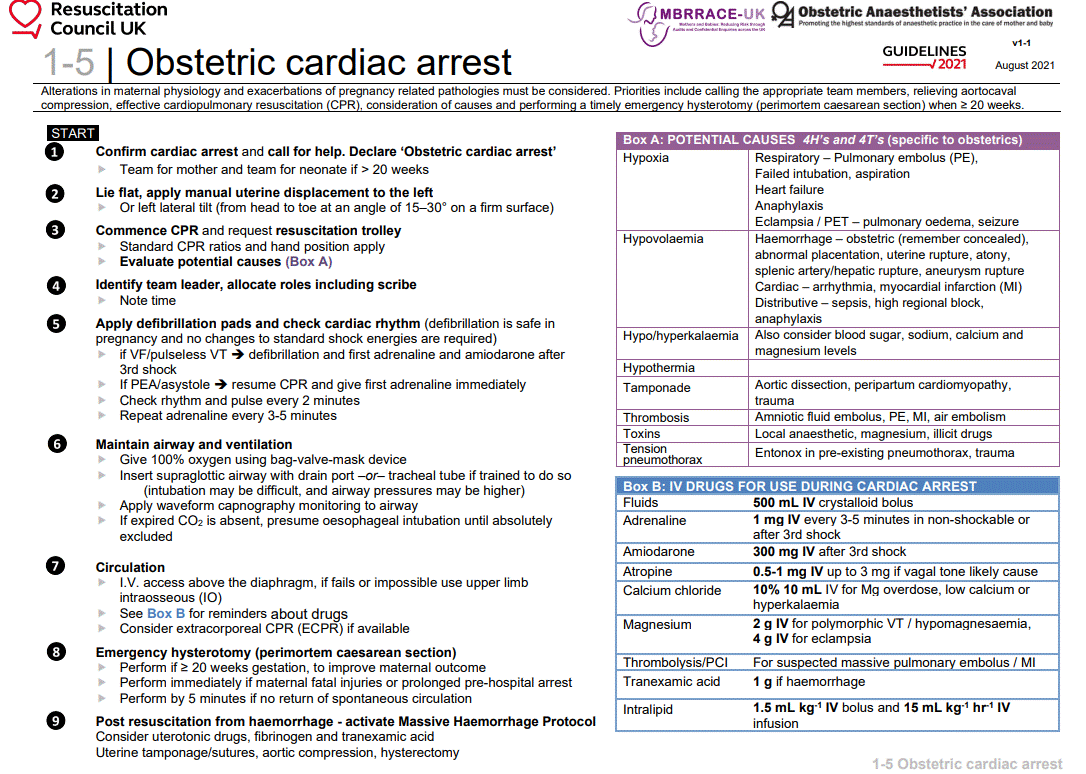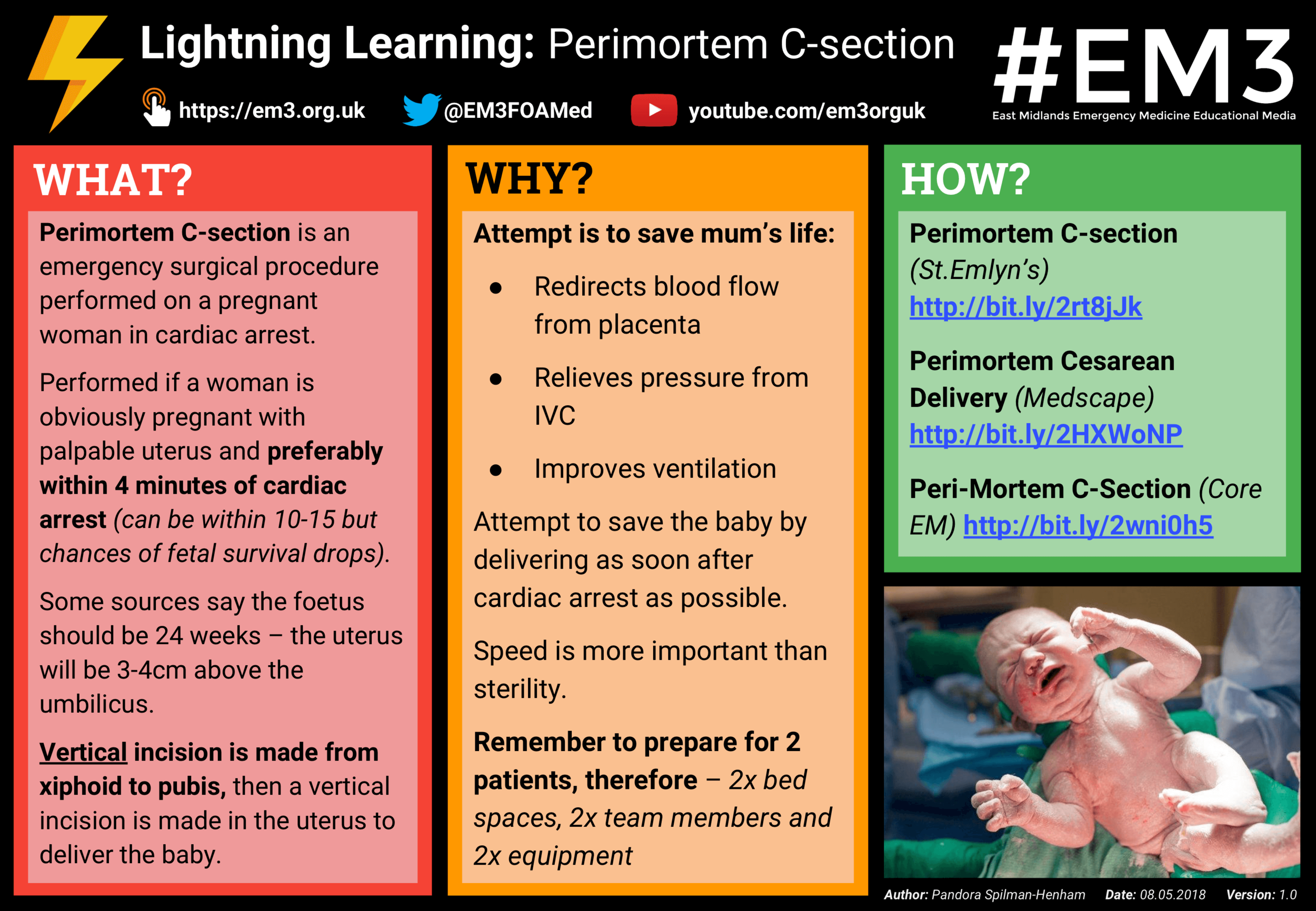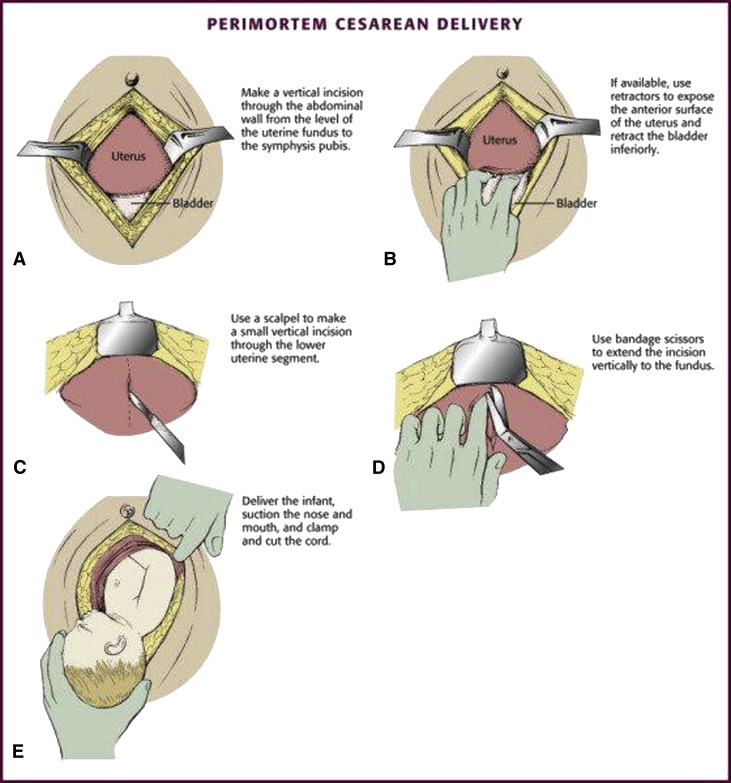Makindo Medical Notes.com |
|
|---|---|
| Download all this content in the Apps now Android App and Apple iPhone/Pad App | |
| MEDICAL DISCLAIMER:The contents are under continuing development and improvements and despite all efforts may contain errors of omission or fact. This is not to be used for the assessment, diagnosis or management of patients. It should not be regarded as medical advice by healthcare workers or laypeople. It is for educational purposes only. Please adhere to your local protocols. Use the BNF for drug information. If you are unwell please seek urgent healthcare advice. If you do not accept this then please do not use the website. Makindo Ltd | |
Resuscitation - Obstetric Cardiac Arrest
-
| About | Anaesthetics and Critical Care | Anatomy | Biochemistry | Cardiology | Clinical Cases | CompSci | Crib | Dermatology | Differentials | Drugs | ENT | Electrocardiogram | Embryology | Emergency Medicine | Endocrinology | Ethics | Foundation Doctors | Gastroenterology | General Information | General Practice | Genetics | Geriatric Medicine | Guidelines | Haematology | Hepatology | Immunology | Infectious Diseases | Infographic | Investigations | Lists | Microbiology | Miscellaneous | Nephrology | Neuroanatomy | Neurology | Nutrition | OSCE | Obstetrics Gynaecology | Oncology | Ophthalmology | Oral Medicine and Dentistry | Paediatrics | Palliative | Pathology | Pharmacology | Physiology | Procedures | Psychiatry | Radiology | Respiratory | Resuscitation | Rheumatology | Statistics and Research | Stroke | Surgery | Toxicology | Trauma and Orthopaedics | Twitter | Urology
Related Subjects: |Adrenaline/Epinephrine |Atropine |Adult Resus:Acute Anaphylaxis |Adult Resus:Basic Life Support |Adult Resus: Advanced Life Support |Adult Resus: Obstetric Cardiac Arrest |Newborn/Child Resus: All |Acute Hypotension |Cardiogenic shock |Distributive Shock |Hypovolaemic or Haemorrhagic Shock |Obstructive Shock |Septic Shock and Sepsis |Shock (General Assessment) |Toxic Shock Syndrome |Resus:Bradycardia |Resus:Tachycardia |Resus:Hyperkalaemia |Resus:Post Resuscitation Algorithm |Resus:Acute Severe Asthma |Resus:Acute Haemorrhage
The perimortem caesarean section, as described in its name, is the surgical delivery of the fetus, performed during or near the time of death of the mother. The procedure must be initiated no more than 4 (others say 5) minutes from loss of pulse for a maximum beneficial outcome. Get obstetric and paediatric help urgently. See references document

About
- Cardiac arrest in pregnancy is rare 1 in 30,000. Effective management involves the decision to perform a perimortem caesarean section if the gestation is greater than 20 weeks and return of spontaneous circulation does not occur after 4 minutes of effective cardiopulmonary resuscitation.
- Delivery should ideally be achieved within 5 minutes of cardiac arrest as this maximises maternal survival and reduces the risk of long-term neurological impairment.
- In hospital, the procedure should be undertaken at the site of the cardiac arrest without moving to an operating theatre.
- Minimal equipment is required to undertake the procedure. Clinical areas where pregnant women are seen should have a designated ‘equipment box’.
- Debriefing all personnel is of utmost importance after the acute event.
Questions
- How many fetuses are present in the uterus? This will allow adequate equipment and personnel preparation for multiple fetal resuscitations, if necessary.
- What is the estimated date of confinement (due date), last menstrual cycle, or estimated gestational age? This will help to determine the age of the fetus and subsequently the viability. Only a fetus of viable age should be considered to be delivered via perimortem cesarean section.
- Are any drugs present in the maternal system? This information can be utilized to direct antidote treatment of the fetus
Steps
- Mother is placed in the left lateral decubitus position and if time permits, a foley placed for bladder decompression.
- The surgeon makes an incision from the xiphoid to the symphysis pubis, through all layers of the abdominal wall.
- The bladder should be decompressed via the previously placed foley catheter. It is retracted manually.
- A second vertical uterine incision made from the fundus toward the bladder, taking care not to incise too deeply and cause penetrating trauma to the fetus.
- The fetus is bluntly delivered from the uterus. As in usual deliveries, suction is performed nasally, then orally. The cord is clamped and cut.
- Resuscitation continues on the maternal patient and resuscitation begins on the neonate. Note that there is likely to be a large amount of pooled blood in the abdominal-pelvic cavities. Along with the large uterus, resuscitation efforts will be difficult.
Performing perimortem caesarean requires a great deal of clinical judgment and is best done with an interprofessional team that includes NICU and labour and delivery nurses.

